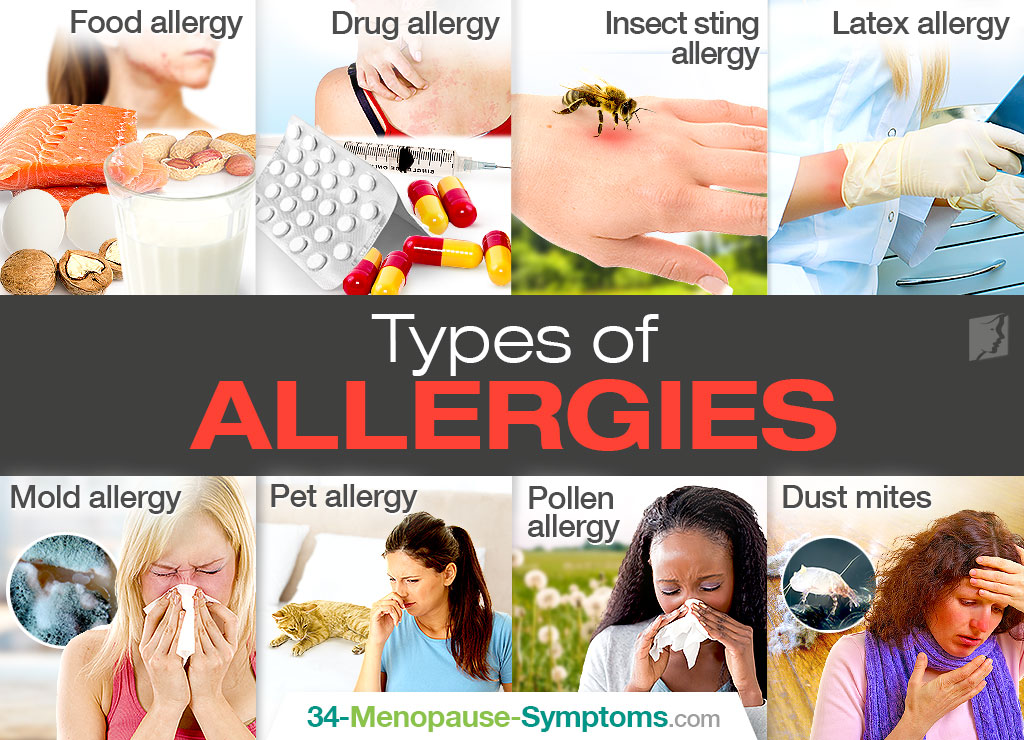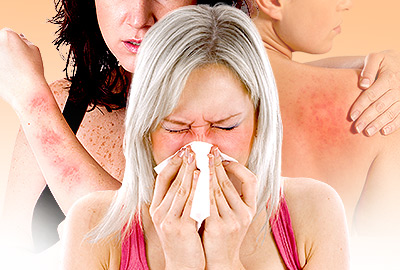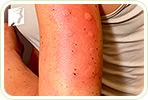Allergies are becoming more and more prevalent around the world, especially in the industrialized countries. With so many different types of allergens co-existing with humans, allergies have become a major public health issue. Their persistent symptoms and limited treatment methods make them difficult to treat, which can have life-altering effects on middle-aged women. Keep reading to know more about all allergy types.
Food Allergy
It is estimated that 90% of all food allergies are triggered by eight types of foods: peanuts, tree nuts, fish, seafood, soy, wheat, milk, and eggs. Most food allergies develop during childhood, but it is possible to become allergic to certain foods as an adult.
The reaction usually occurs shortly after ingestion, often within a few minutes, although there are some food allergies that produce a delayed immune reaction.
Drug Allergy
The most common medications causing allergies include penicillin, non-steroidal anti-inflammatory drugs (NSAIDs), such as aspirin or ibuprofen, and antibiotics containing sulfa drugs among others.
Occasionally, certain drug a women is allergic to is the only available treatment for a given condition, so she may go through the process of desensitization, which involves taking the drug in increasing amounts until the prescribed dose can be tolerated without adverse effects.
Insect Sting Allergy
Insect sting allergies are rare, and they are caused by the venom of five insects: honeybees, hornets, wasps, fire ants, and yellow jackets.
It is common to confuse a normal reaction to an insect bite with an allergic reaction. Insect stings usually produce redness, swelling, pain and itching, but an allergic reaction also includes hives and itching of the whole body, swelling of the throat and tongue, difficulty breathing, headache, and dizziness.
Latex Allergy
Natural rubber latex is a plant-based substance commonly used to make medical and dental supplies, such as gloves or syringes, as well as condoms or athletic shoes. Allergy is often developed after many previous exposures to latex.
An allergic reaction can be triggered not only by a direct contact with latex products, but also by inhalation of latex proteins found in the powder in latex gloves.
Mold Allergy
Mold is a fungus, and with over 100,000 different species, it is difficult to avoid its exposure as it exists virtually everywhere.
An allergic reaction occurs when mold spores, which normally float in the air, are inhaled. Sometimes more serious complications can take place, as in allergic bronchopulmonary aspergillosis, which is an allergic and inflammatory reaction to mold.
Pet Allergy
Pet allergy is one of the most common allergy types, with cat allergies being twice as common as dog allergies. Allergens responsible for triggering an allergic reaction are found in pet's dander, urine, and saliva. An allergic reaction can be even caused when pet is not present, because allergens can be carried by pet owners on their clothes.
Pollen Allergy
Pollen is released by plants for fertilization, and most pollen known to cause allergies comes from grasses, trees, and weeds. Commonly called hay fever, pollen allergy is one of the most common triggers of seasonal allergies. Symptoms are quite bothersome and often last for the entire season for as long as the pollens are in the air.
Dust mites
Dust mites are microscopic arthropods living in our homes that can an allergic reactions. They hide in carpets and furniture and often saturate the living spaces during vacuuming and cleaning.
Although there are many different types of allergies, they produce similar symptoms, which include hives, sneezing, watery eyes, as well as wheezing and difficulty breathing among many others. The exception is a food allergy, which also produces gastrointestinal symptoms, such as vomiting or stomach cramps. Severe allergic reactions can lead to anaphylaxis and result in death, so it is important to ask your doctor to help you manage your allergies well. You might also find interesting to learn how to distinguish allergies from a common cold.
Sources
- American College of Allergy, Asthma & Immunology. (2014). Types of Allergies. Retrieved August 16, 2017 from http://acaai.org/allergies/types
- Asthma and Allergy Foundation of America. (2017). Types of Allergies. Retrieved August 16, 2017 from http://www.aafa.org/page/types-of-allergies.aspx
- European Academy of Allergy and Clinical Immunology. (2014). Global Atlas of Allergy. Retrieved August 16, 2017 from http://www.eaaci.org/globalatlas/GlobalAtlasAllergy.pdf
- Center for Disease Control and Prevention. (2011). Allergies. Retrieved August 16, 2017 from https://www.cdc.gov/healthcommunication/toolstemplates/entertainmented/tips/allergies.html




